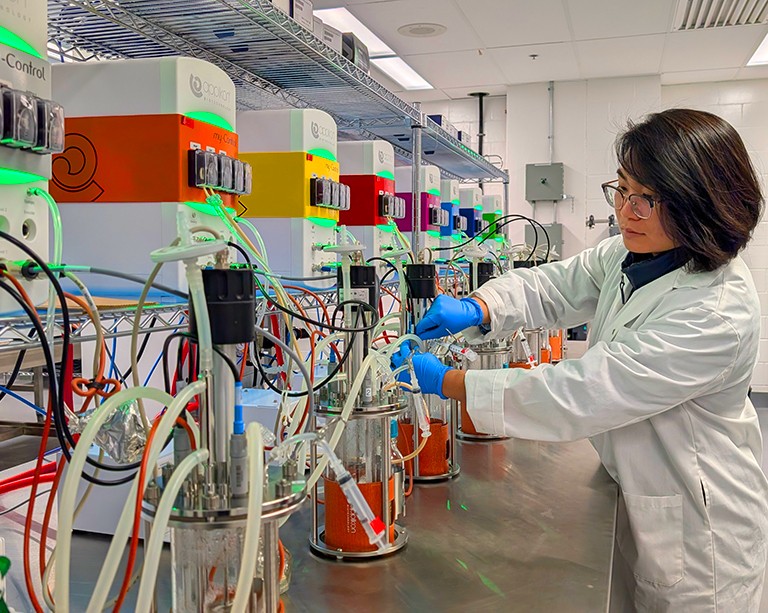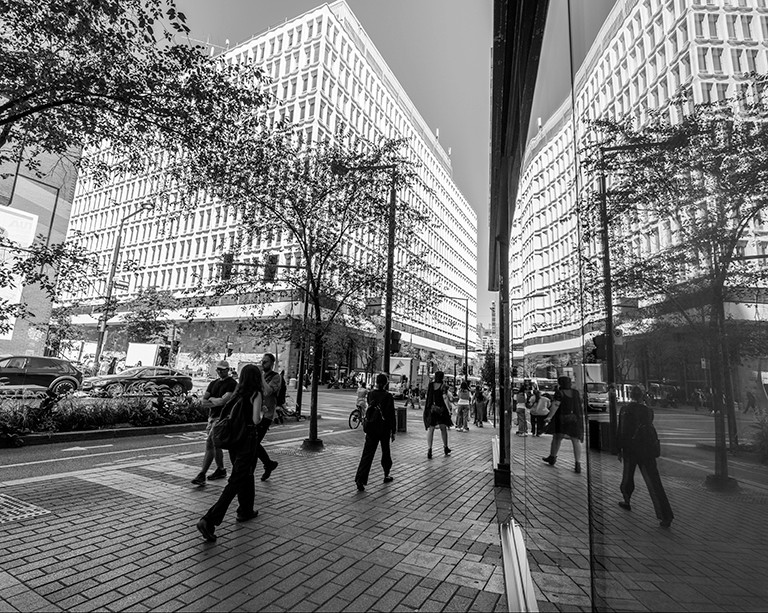Concordia researchers discuss how local action can shift attitudes on waste

Small-scale reuse initiatives can drive big change — by diverting waste, building community and reshaping consumption habits. That’s the case made by Concordia faculty and staff in a new article published in IEEE Technology and Society Magazine.
Co-authored by Ketra Schmitt, associate professor with the Centre for Engineering in Society at the Gina Cody School of Engineering and Computer Science, Anna Timm-Bottos, Faisal Shennib and Arrien Weeks, the article spotlights the Concordia University Centre for Creative Reuse (CUCCR).
The on-campus initiative collects usable materials from across the university and makes them freely available to anyone who wants them. Since launching in 2017, CUCCR has diverted 46 tons of materials from landfill and saved users an estimated $500,000 in avoided costs.
“CUCCR is like the engine or core of a truly local circular economy model,” says Shennib (MEng 10), environmental specialist in the Office of Sustainability and PhD student in the Individualized Program at the School of Graduate Studies.
“It is all about space and community — unwanted materials need a space to pause and need people displaying it, sorting it and engaging the community to think differently about the materials.”
CUCCR accepts only Concordia-generated materials, but it’s open to all users. A logging system helps track the centre’s environmental and economic impact while supporting Concordia’s zero-waste goals.
The project was co-founded by Timm-Bottos (MA 17), reuse programming and sustainability specialist in the Office of Sustainability, and Weeks (BFA 06, MA 22), a former sustainability technician in the same office.
In the article, the co-founders join Shennib in reflecting on CUCCR’s evolution and its potential as a model for creative reuse on other campuses.
From overlooked basement to community hub
CUCCR began in a dusty storage cage in the Henry F. Hall (H) Building basement and was transformed into a welcoming depot using salvaged materials. Today, it has a new home in the Grey Nuns (GN) Building.
“We’ve been able to transform it into a space that not only displays materials for people to take but also encourages the creative questioning we require to change the culture and promote reuse,” says Timm-Bottos.
“I just love the way that CUCCR has always prioritized a sense of abundance and an eagerness to share what we have with everyone.”
The centre has also become a test bed for sustainable innovation. Adjacent projects have included electronics repair and on-site plastics recycling. Future developments could explore tools like machine learning to help catalogue and sort incoming items.
A local example with broader implications
The team emphasizes that CUCCR’s impact goes beyond what can be weighed or measured. It challenges dominant waste-management approaches that prioritize extraction and recycling over reuse and repair — despite their higher environmental and financial costs.
While broader systemic change is still needed, the article argues that projects like CUCCR can be powerful catalysts — sparking conversations and building momentum toward more sustainable institutional and societal practices.
“We need places like this to prevent new purchases and keep usable items in circulation for as long as possible,” Timm-Bottos says.
Read the cited paper: “A Conversation on Waste and Local Action.”




